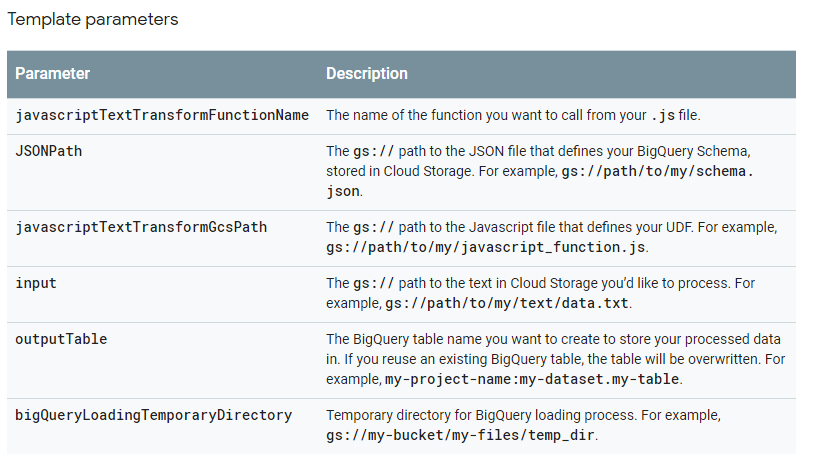2018年7月8日
から hiruta
kubernatesでRegional Persistent Disksを使うには #gcpug はコメントを受け付けていません
Regional Persistent Disksについて
Persistent Disksは1ゾーンのみで使用できるものだが、Regional Persistent Disks は異なるゾーンにインスタンスにアタッチができる。
ディスクの内容はレプリケーションしてくれる。
regional persistent disks provide durable storage and replication of data between two zones in the same region.
Persistent Disksの作成
gcloud beta compute disks create web-disk-2 --size 30GB --type pd-ssd --region asia-east1 --replica-zones asia-east1-a,asia-east1-b
–replica-zonesに、2ゾーンを指定する。ただし、3 ゾーンを指定すると、–replica-zones: too many args となり、作成できない。
最初に作成されたディスクの確認をします。
$ gcloud beta compute disks list
NAME LOCATION LOCATION_SCOPE SIZE_GB TYPE STATUS
web-disk-2 asia-east1 region 30 pd-ssd READY
7/8現在、Web コンソールからはRegional Persistent Disksを確認できない。
regional diskのwriteモードでのアタッチは1インスタンスしかできないことは、Persistent Disksと同じ
Persistent Disksだと、ROMだと別のインスタンスにアタッチが可能
Regional Persistent Disksについては下記を参照してください。
https://cloud.google.com/compute/docs/disks/regional-persistent-disk
kubernatesでRegional Persistent Disksを使うには
regional diskをPersistentVolumeで使う場合、下記のように、PersistentVolumeを作成します
( failure-domain.beta.kubernetes.io/zoneタグが要)
※https://kubernetes.io/docs/concepts/storage/volumes/
apiVersion: v1
kind: PersistentVolume
metadata:
name: task-pv-volume
labels:
failure-domain.beta.kubernetes.io/zone: asia-east1-a__asia-east1-b
spec:
storageClassName: manual
capacity:
storage: 30Gi
accessModes:
- ReadWriteOnce
gcePersistentDisk:
pdName: web-disk-2
fsType: ext4
kubernetesのmaster versionは、1.10が必要(1.10.5-gke.0で動確)
それ以下だとPersistentVolumeでエラーとなります。
$ kubectl create -f test.yml
Error from server (Forbidden): error when creating "test.yml": persistentvolumes "task-pv-volume" is forbidden: error querying GCE PD volume web-disk-2: The regional PD feature is only available via the GCE Alpha API. Enable "GCEDiskAlphaAPI" in the list of "alpha-features" in "gce.conf" to use the feature.
次に、PersistentVolumeClaimの作成
kind: PersistentVolumeClaim
apiVersion: v1
metadata:
name: task-pv-claim
spec:
storageClassName: manual
accessModes:
- ReadWriteOnce
resources:
requests:
storage: 30Gi
$ kubectl create -f task-pv-claim.yml
persistentvolumeclaim "task-pv-claim" created
$ kubectl get pvc task-pv-claim
NAME STATUS VOLUME CAPACITY ACCESS MODES STORAGECLASS AGE
task-pv-claim Bound task-pv-volume 30Gi RWO manual 9s
$ kubectl get pv task-pv-volume
NAME CAPACITY ACCESS MODES RECLAIM POLICY STATUS CLAIM STORAGECLASS REASON AGE
task-pv-volume 30Gi RWO Retain Bound default/task-pv-claim manual
task-pv-claimをPodからマウントするコンフィグを作成
apiVersion: extensions/v1beta1
kind: Deployment
metadata:
name: web-app
labels:
app: WebApp
spec:
template:
metadata:
labels:
app: mysql-client
spec:
containers:
- name: web
image: asia.gcr.io/xxxxxxxxxxxxxxx/nginx:latest
ports:
- containerPort: 8080
env:
- name: WORDPRESS_DB_HOST
value: 127.0.0.1:3306
# These secrets are required to start the pod.
# [START cloudsql_secrets]
- name: WORDPRESS_DB_USER
valueFrom:
secretKeyRef:
name: cloudsql-db-credentials
key: username
- name: WORDPRESS_DB_PASSWORD
valueFrom:
secretKeyRef:
name: cloudsql-db-credentials
key: password
# [END cloudsql_secrets]
volumeMounts:
- name: task-pv-storage
mountPath: /www
- name: php-fpm
image: asia.gcr.io/xxxxxxxxxxxxxxx/php-fpm:latest
ports:
- containerPort: 9000
# Change <INSTANCE_CONNECTION_NAME> here to include your GCP
# project, the region of your Cloud SQL instance and the name
# of your Cloud SQL instance. The format is
# $PROJECT:$REGION:$INSTANCE
# [START proxy_container]
- name: cloudsql-proxy
image: gcr.io/cloudsql-docker/gce-proxy:1.11
command: ["/cloud_sql_proxy",
"-instances=xxxxxxxxxxxxxxx:asia-east1:web2-db=tcp:3306",
"-credential_file=/secrets/cloudsql/credentials.json"]
volumeMounts:
- name: cloudsql-instance-credentials
mountPath: /secrets/cloudsql
readOnly: true
# [END proxy_container]
# [START volumes]
volumes:
- name: cloudsql-instance-credentials
secret:
secretName: cloudsql-instance-credentials
- name: task-pv-storage
persistentVolumeClaim:
claimName: task-pv-claim
# [END volumes]
kubectl apply -f deployment.yml
でデプロイし、Podにログインして、Regional Persistent Disksが、マウントされていることを確認しました。
root@web-app-84dcf8d8c8-vdnjp:/# lsblk
NAME MAJ:MIN RM SIZE RO TYPE MOUNTPOINT
sda 8:0 0 100G 0 disk
|-sda1 8:1 95.9G 0 part /etc/hosts
|-sda2 8:2 0 16M 0 part
|-sda3 8:3 0 2G 0 part
|-sda4 8:4 0 16M 0 part
|-sda5 8:5 0 2G 0 part
|-sda6 8:6 512B 0 part
|-sda7 8:7 0 512B 0 part
|-sda8 8:8 16M 0 part
|-sda9 8:9 0 512B 0 part
|-sda10 8:10 0 512B 0 part
|-sda11 8:11 8M 0 part
`-sda12 8:12 0 32M 0 part
sdb 8:16 0 30G 0 disk /www


